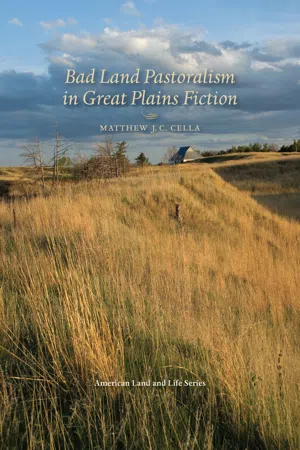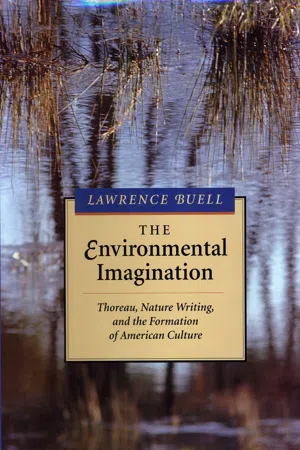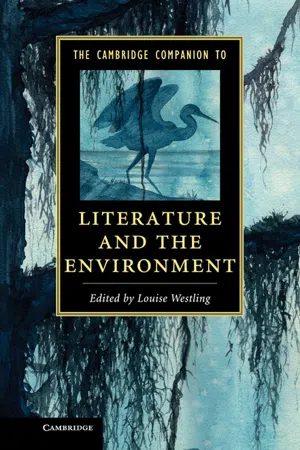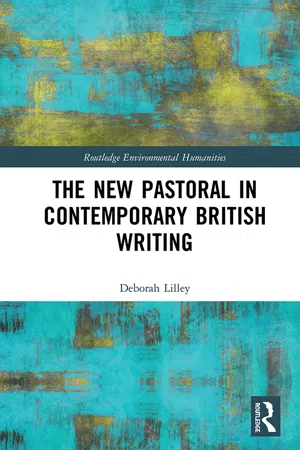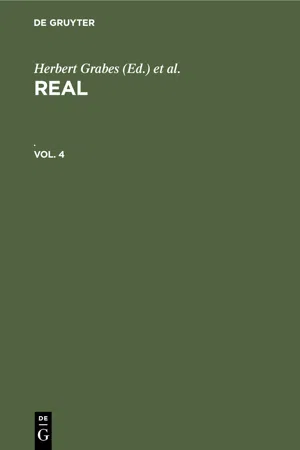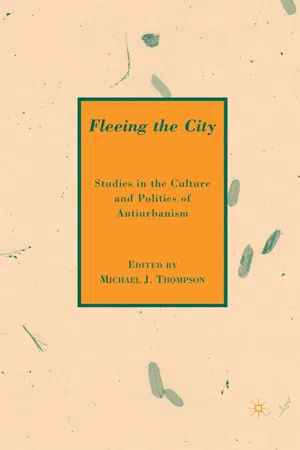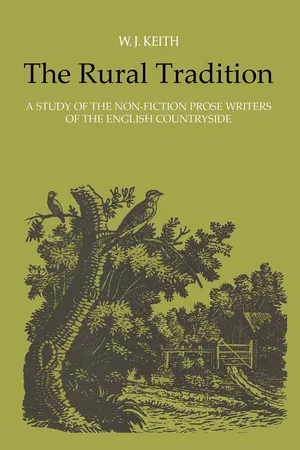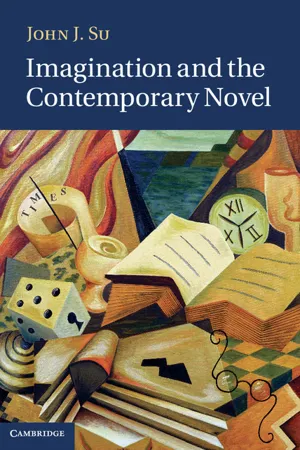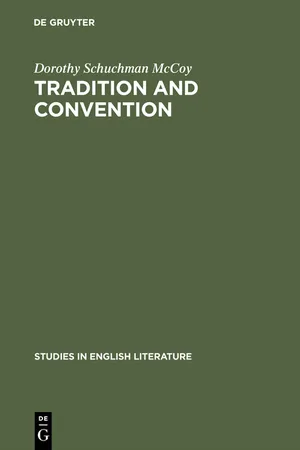Literature
Pastoral Fiction
Pastoral fiction is a literary genre that idealizes rural life, often depicting shepherds and rustic settings. It typically emphasizes the beauty and simplicity of nature, and explores themes of love, innocence, and the human connection to the natural world. Pastoral fiction often presents an idyllic and romanticized portrayal of country life, offering an escape from the complexities of urban society.
Written by Perlego with AI-assistance
Related key terms
1 of 5
11 Key excerpts on "Pastoral Fiction"
- eBook - PDF
- D. Adams(Author)
- 2009(Publication Date)
- Palgrave Macmillan(Publisher)
Except for one late novel published at their own expense by Brentano’s in America (at the helpful suggestion of Carl Van Vechten, that great champion of literary margins), Firbank was forced to underwrite each of his novel’s publication, a state of affairs that he found both demoralizing and demeaning. But his inherited wealth, and the novels’ lack of popular success, served to assure his creative freedom. Firbank’s fiction is proof of the pastoral’s enduring appeal. Recent theo- rists have argued persuasively that the pastoral should be recognized as one of the universal “types of literature—like tragedy, comedy, novel, romance, satire, and elegy—which have generic-sounding names but which are more inclusive and general than genres proper” (Alpers 46). They contend that the pastoral is an undying mode of literature (the term I have been using), which takes on different characteristics in different times and cultures. Despite these “different images and nomenclature,” the “relationships and values” of the pastoral remain constant (Ettin 69). In whatever manifestation, the pastoral is an attitude toward life that favors freedom over responsibility, lei- sure over labor, retirement over engagement, desire over sublimation, friend- ship over family, the past over the future, and art above all. At its heart, the pastoral has a vision of an idealized past world, which is sometimes labeled The Golden Age, Arcadia, or Eden. It is significantly different from a future utopian world, and is dreamed of by a different type of temperament, as W. H. Auden explains in this useful distinction: The psychological difference between the Arcadian dreamer and the Utopian dreamer is that the backward-looking Arcadian knows that his expulsion from Eden is an irrevocable fact and that his dream, therefore, is a wish-dream which cannot become real . . . The forward-looking Utopian, on the other hand, necessarily believes that his New Jerusalem is a dream which ought to be realized. - eBook - PDF
- Matthew J. C. Cella(Author)
- 2010(Publication Date)
- University Of Iowa Press(Publisher)
Introduction Biocultural Change and Literary Pastoralism in Great Plains Fiction Pastoral Conversion and the Community Concept Within the realm of literary studies, the word pastoral is likely to conjure up a series of related experiences revolving around the process of escaping: retreat, renew, refresh, and—sometimes—return. Whether it is Huck Finn “lighting out for the territories” of the trans-Mississippi west, Nick Adams fishing the Two Hearted River in Michigan’s Upper Penin-sula, or Jim Burden strolling the shaggy prairies beyond the town limits of Blackhawk, Nebraska, conventional pastorals in the North American tradition entail removal from a restrictive social community and a subse-quent entry into an idealized rural sanctuary. In this sense, conventional pastoralism is tinged with a strain of misanthropy as it places nature and culture in an oppositional relationship in which the former is favored over the latter. The pastoral remove is almost always temporary and fleeting, a dream or fantasy with little long-term applicability in the “real” world (except, of course, if you are a shepherd!). A major contention of this book, however, is that pastoral experience, no matter how fleeting, can translate into pastoral practice . This is to say that literary pastoralism has the poten-tial to support an alternative series of ideals based not on escape but on 2 introduction stewardship: community, continuity, and commitment. A more mature, ecocentric pastoralism demands a dialogue between human culture and nonhuman nature. This more advanced pastoralism moves beyond fantasy and dream; instead, the pastoral event—the human encounter with nature in myriad forms—becomes the basis for a long-term relationship, a kind of conversion experience that solidifies the convert’s ethical obligation to the place(s) she inhabits. Take, for example, the case of Frederick Philip Grove’s Abe Spaulding, the protagonist of Fruits of the Earth (1933). - eBook - PDF
The Environmental Imagination
Thoreau, Nature Writing, and the Formation of American Culture
- Lawrence Buell(Author)
- 1996(Publication Date)
- Belknap Press(Publisher)
I H istorical and T heoretical C ontexts P astoral I deology The line between a mythic drama that helps to redeem people in the here and now, and one that simply lends to an opiated passiveness, is necessarily thin. —Genaro M. Padilla, “Myth and Comparative Cultural Nationalism” those who want to reform society according to nature are neither right nor left —Anna Bramwell, Ecology in the Twentieth Century Persuade a careless, indolent man to take an interest in his garden, and his reformation has begun. —Susan Fenimore Cooper, Rural Hours I of pastoral, for “pastoral” has be-come almost synonymous with the idea of (re)turn to a less urbanized, more “natural” state of existence. 1 Indeed this entire book, in focusing on art’s capacity to image and to remythify the natural environment, is itself a kind of pastoral project. Historically, pastoral has sometimes activated green consciousness, sometimes euphemized land appropriation. It may direct us toward the realm of physical nature, or it may abstract us from it. These I take to be the basic issues of ideology and representation posed by pastoral tradi-tion, and the purpose of the next two chapters is to deal with each in turn, with special reference to American literary history. Pastoral’s internal contradictions, inherent from antiquity, have inten-sified since classicism began to break down in the post-Renaissance. In Greco-Roman literature, pastoral both satirized and replicated the hyper-civilization of urban life by portraying supposititious shepherds and other rustics in such stylized attitudes as playful exuberance and amatory despair. In English literary history, pastoral was further developed by Edmund Spenser, John Milton, and others as a highly learned, allusive discourse, as befit the element of playful artifice already present in Theocri-tus. - Louise Westling(Author)
- 2013(Publication Date)
- Cambridge University Press(Publisher)
Garrard appears to be thinking of a genre with a canon of now “outmoded models” for current notions of ecology that reject “harmony and balance.” Buell’s “pastoralism” seems to refer to a mode of writing that engages with human relationships with land in a recognizable “species of cultural equip- ment.” If Marx can foresee completely “new versions of pastoral” the genre must have transformed into a concept, as I argue has become the case with, for example, the ecocritical usage of terms such as “post-pastoral,” “urban pastoral,” or “gay pastoral.” TERRY GIFFORD Pastoral, Anti-Pastoral, and Post-Pastoral 1 Gifford 18 Pastoral as a genre is really confined to two foundational texts that estab- lished the essential features of pastoral conventions and to which later writ- ers refer back, either consciously or implicitly. In the third century BCE the Greek scholar Theocritus (316–260 BCE) wrote about the shepherds’ song competitions of his youth in Sicily for his patron, the general who colonized Egypt and resided in the court at Alexandria. Thus the Idylls of Theocritus, the first pastoral text, gave us the word “idyllic” and established a sense of idealization, nostalgia, and escapism in a poetry of the countryside written for a court audience – all qualities that have come to be associated with definitions of the pastoral. It also created the defining pastoral momentum of retreat and return in the sense that the heightened language in which the herdsmen of Theocritus speak delivers to an urban readership insights into what Paul Alpers characterizes as common “plights and pleasures” 4 with an awareness of their limitations. There is a knowing artifice in the pastoral dis- course, which is accepted because these shepherds are also representatives of everyman to readers who recognize the conventions of the genre.- eBook - ePub
- Deborah Lilley(Author)
- 2019(Publication Date)
- Routledge(Publisher)
3 Pastoral relations People, place, and nature in contemporary British literary fiction The turn towards place in contemporary British literary fiction has been driven by questions of belonging and influence, framed through rising political tensions, economic uncertainties, and environmental concerns. The pastoral is being used to structure and explore these questions, and examine the shifting cultural and ecological landscapes of the country. The dualisms that the mode animates – between conceptions of the country and the city, the past and the present, and the human and the natural – are placed under new pressures in this context. Factors ranging from borders and Brexit to changing technologies and industries to climate change and sea level rise test the limits of pastoral and its capacity to represent and reflect upon the conditions in which it is being written. It is at these limits that the mode’s critical potential is reinvigorated. Where the rural idyll is absent, where its divisions of space and thought upset expectations, where the effects of retreat are found in new places and altered circumstances, new versions of pastoral – and new insights about contemporary Britain – can be found. 1 As I discussed in Chapter 1, the continuing relevance of pastoral in the twentieth and twenty-first centuries has long been subject to debate. For Timothy Morton, for instance, ‘we need a whole new way of evoking the environment’ (2010, 15). The viability of the pastoral concepts of the country and the city in contemporary Britain, and therefore the critical potential of the contrast between them, has attracted particular criticism. In their 1974 analysis of pastoral, John Barrell and John Bull argued against the usefulness of the form, given that ‘it is difficult to pretend that the English countryside is now anything more than an extension of the town’ (1974, 432) - eBook - PDF
- Herbert Grabes, H. J. Diller, Hans Bungert(Authors)
- 2020(Publication Date)
- De Gruyter(Publisher)
Yonder the road curves languidly between hedges and broad fringes of green, and along it an old man guides the cattle in an afternoon milking . . . They turn under the archway of a ruined abbey, and low as if they enjoy the reverberation, and dissappear. 2 These images of harmony, peace and beauty are obviously not compati-ble with the facts of social observation. The writer, therefore, while creating and savouring the pastoral illusion, is also at pains to explain 2 Thomas, 62-63. The stanza quoted by Thomas is from Richard Barnfield's The Shep-heards Content or The Happiness of a harmlesse life ( The Affectionate Shepheard, 1594). 70 Hans Ulrich Seeber the mechanism of the projection. Given the conditions of modern expe-rience (the power of the world) and the impact of the aesthetics of realism, traditional pastoral is turned into a sort of meta-pastoral. It be-comes the product of a certain mental disposition teased into activity by congenial surroundings and the power of personal needs and reminis-cences in the context of a complex civilization. In acknowledging or suggesting this affinity, such country books declared themselves to be the heirs of a tradition and a structural con-stellation which was by no means dead nor, indeed, likely to die in an age of increasing social and cultural complexity. For the pastoral, both in its traditional form and in the broader guise of country literature, could —among many other functions—become for sophisticated readers and writers an outlet for their desire, whether for valid reasons or not, to withdraw from an increasingly urban society to a simpler, more natu-ral and presumably happier level of existence. Many of these country books, describing as they did traditional and time-honored patterns of interaction between man and nature, seemed, moreover, to provide alt-ernatives to the disconcerting experience of what has been termed by Reinhart Koselleck the acceleration of time (19, 63). - eBook - PDF
Fleeing the City
Studies in the Culture and Politics of Antiurbanism
- M. Thompson(Author)
- 2009(Publication Date)
- Palgrave Macmillan(Publisher)
We all remember Arcadia, the ideal site of harmony, beauty, and material sufficiency that chiefly engages Virgil’s attention. Pastoral Ideals and City Troubles 75 But we tend to forget the extent to which this earthly paradise derived its charm from the two contrasting kinds of terrain upon its borders. In the first eclogue Virgil insists upon the encroaching presence both of Rome—locus of imperial power, authority, and repression—and of the bare rocks and marshland that epitomize unimproved, inhospita- ble, infertile, wild nature. Pastoralism may be regarded as an ecologi- cal literary mode, its purpose being to mediate between the claims of these two conflicting yet inescapable human environments: one associ- ated with man’s biological origins, the other a product of technological change and sociocultural evolution. When the pastoral ideal is pictured as a middle landscape located between the extremes of wildness and overcivilization, it is easy to see why it lent itself, beginning in the Age of Discovery, to interpretations of life in the New World. Here, in place of an imaginary Arcadia, was the utopian promise of the new colonies, with the old world to the east, realm of sophistication, power, and history, and the whole reach of the North American wilderness to the west. It is not surprising, under the circumstances, that the transit of Europeans to America often was conceived, like the good shepherd’s retreat to an ideal, green pasture, as a movement toward a new, simpler, and happier way of life. The crucial distinction, then, between American and traditional versions of pastoral, is the new realism that was imparted to the ideal by the new world situation. Before the Renaissance, poets had habit- ually depicted a dreamland. But in Shakespeare’s time the symbolic landscape that had for so long been considered a poetic figure suddenly acquired a real geographic location. - eBook - PDF
The Rural Tradition
A Study of the Non-Fiction Prose Writers of the English Countryside
- William Keith(Author)
- 2019(Publication Date)
- University of Toronto Press(Publisher)
Although the deep and seemingly irreparable split between urban and ru ral viewpoints is comparatively recent, a distinction between town and country is, of course, as old as literature and recorded history. Without it, for example, a pastoral convention would be unthinkable, and it is vital to this study that 'rural ' and 'pastoral ' should be distinguished forthwith. Despite superficial 4 THE RURAL TRADI TION similarities the two are opposed rather than related. Although we may at first think of the pastoral tradi tion as a mouthpiece for the rural view, it is in fact predominantly urban in character. While it general ly presents the country in positive terms as a retreat from care, it is a highly sophisticated form orig inat ing in the town and invar iably for urban consumption; in Wil liam Empson's terms it is about countrymen but neither by nor for them. 3 Theocritus, for example, wrote his idylls for the cultivated townsmen of his day; Virgil, though of yeoman origin, was educated in fashionable centres including Milan and Rome, and his eclogues presuppose a sophisticated society. Their verse was smooth, al lusive, and urbane. It is therefore not altogether surprising to find W.H . Auden listing pastoral verse together with basilicas, divas, and dictionaries among 'the courtesies of the city.' 4 The basic dist inct ion between rural and pastoral literature is clearcut; none the less, by virtue of a common setting the two share certain characte ristics, and even overlap to some extent. In Walton's Compleat Angler, for instance, the earliest importan t example in English of non-fiction rural writ ing, we find the same tendency to view country and town in terms of simple and complicated that is a prime feature of pastoral. Again, since its productions are 'artificial,' even if its subject matter is 'natural, ' a tradition of rural writ ing is almost certain to be dependent, economically, upon an urban readership. - eBook - ePub
The Forms of Historical Fiction
Sir Walter Scott and His Successors
- Harry E. Shaw(Author)
- 2018(Publication Date)
- Cornell University Press(Publisher)
2 There are then two main possibilities: modes in which present concerns predominate and modes in which an interest in the past predominates. The category of history as pastoral is clearly an example of a mode in which the past is used to serve the present. So is the use of history as a source of drama, though in a much narrower way: in such works, the past fulfills the need for an intense imaginative experience in the present. My final category, history as subject, covers those works primarily interested in the past. Of course a further theoretical possibility exists. What of works that balance past and present interests? I believe that in standard historical fiction, this possibility is rarely if ever actualized. In the novels that come closest to achieving such a balance, an interest in the past still predominates. The needs of the present are compelling; they are likely to upset the balance and hence require a strong historicist counterweight.The wary reader will have noticed that my three uses of history imply a simpler distinction between more and less truly historical visions. Whatever their other merits, novels that use history as pastoral or as a source of drama will lack the potentiality to be as richly and integrally historical as novels that find their subject in history. In the previous chapter, I pointed out the dangers of using a distinction between true and false historicity as the basic tool in approaching historical fiction, but we can hardly escape such judgments altogether. I do not wish to produce a value-free account of my subject, but instead to provide a mode of analysis in which value judgments do not immediately homogenize and distort phenomenological perceptions. Once we are able to recognize the different kinds of roles history plays in fiction, questions about the relative historicity of different fictional structures are inescapable and useful. An attempt to meet works on their own generic terms does not mean that we will consider equally valuable all that we find: to understand is not to forgive. I should reemphasize that a historical novel may well employ history in a variety of ways as it proceeds. We are looking for what the Russian Formalists might have called the historical “dominant” of a work; this does not imply excluding other kinds of historical intentions and effects, only putting them in their places.3 - eBook - PDF
- John J. Su(Author)
- 2011(Publication Date)
- Cambridge University Press(Publisher)
M. Forster’s Howard’s End (1910), and D. H. Lawrence’s The Rainbow (1915) – have been read as critiques of industrialization in Britain, but neither the works themselves nor theorists of the pastoral identify such critiques in terms of a realist aesthetics. To the contrary, Terry Gifford characterizes the pastoral as a discourse that is fundamentally different from realism. 8 While it is certainly possible that a pastoral work could undertake to represent reality without using the conventions of literary realism (i.e., a commitment to philosophical realism does not necessarily presuppose a commitment to literary realism), the tendency among scholars of the pastoral has been to assume that the absence of the latter implies a lack of interest in the former. For Raymond Williams, this is the danger of The pastoral and the postmodern 60 viewing pastoral works as social critique. Williams recognizes that the plots of “neo-pastoral” English novels from the eighteenth century onward dramatize a struggle between “economic advantage and other ideas of value.” 9 Yet such works risk creating a myth of modern England that conceals the economic and political forces that led to social suffer- ing. By characterizing the present as an inevitable fall from an innocent agrarian life, the pastoral exonerates capitalism. Indeed, such mystifica- tion arguably represents the ideological function of the pastoral. Contrary to what Williams’s analysis might predict, Daniel Martin is more explicitly sympathetic to socialism than any of Fowles’s previous fictional works or his book of philosophical musings, The Aristos (1964). 10 The epigraph to The French Lieutenant’s Woman, “Every emancipation is a restoration of the human world and of human relationships to man him- self,” is drawn from Marx, but the novel’s understanding of emancipation is shaped far more by Sartrean existentialism than by Marxism. - eBook - PDF
Tradition and convention
A study of periphrasis in English pastoral poetry from 1557–1715
- Dorothy Schuchman McCoy(Author)
- 2015(Publication Date)
- De Gruyter Mouton(Publisher)
III. PERIPHRASE WITHOUT PURPOSE A. PASTORAL REALITY IN A METAPHORICAL FIELD So 'shepherd' can on occasion mean 'poet'; to sing or play in shepherd fashion is to write and publish poetry ... to be taught by the Nymphs as one pastures cattle among the hills, so that Rumour carries the report of one's singing up to the throne of Zeus, is to win the royal favour and patronage as a writer of verse ,.. 1 Clearly, the conventional language has endured through many centuries of pastoral poetry. The representative nature of pastoral has almost become a part of the pastoral tradition itself, although classical critics who distinguish sharply among the three styles of rhetoric, and who think of allegory as a tool of satire, do not like to let it make the pastoral language more complex. But this evidence of allegorical correspondents for parts of a pastoral scene or for personages in it comes from the Seventh Idyllium of Theo-critus. Theocritus, for later critics, is the father of pastoral realism. Theocritus' shepherds may be real country people, but as Herbert Rose demonstrates, the suggestion of other meanings seems never to be far from pastoral imagination. The pastoral scene, even a realistic one, prods the poet into interpretation. The evidence of fixed allegorical patterns behind this setting does not, as has been asserted earlier, immediately degrade the poetry to an automatic outpouring of fixed references. What is bad in poetry of this kind will be made clear by later examples. The pastoral tradition cherished by many includes the non-literal use of words 1 Herbert Jennings Rose, The Eclogues of Vergil (Berkeley and Los Angeles, 1942), p. 10. Reference to Theocritus' Seventh Eclogue. 162 PERIPHRASE WITHOUT PURPOSE and situations; whereas, other readers and poets prefer to eliminate every non-literal implication as unrealistic. But pastoral without some of its ideal suggestive coloring becomes burlesque.
Index pages curate the most relevant extracts from our library of academic textbooks. They’ve been created using an in-house natural language model (NLM), each adding context and meaning to key research topics.

